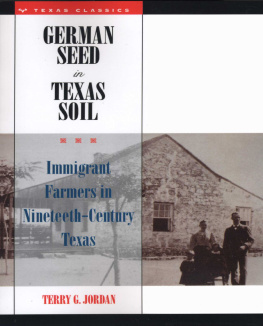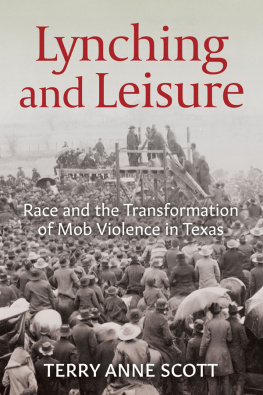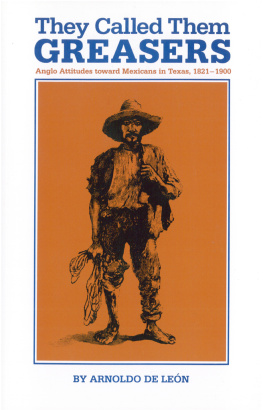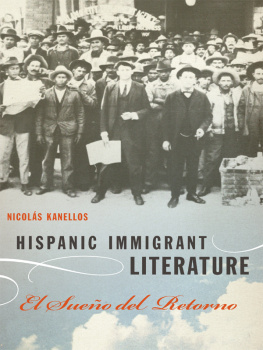GERMAN SEED IN TEXAS SOIL
Immigrant Farmers in Nineteenth-Century Texas
by Terry G. Jordan

UNIVERSITY OF TEXAS PRESS
AUSTIN
International Standard Book Number 978-0-292-72707-6
Library of Congress Catalog Card Number 66-15703
Copyright 1966 by Terry G. Jordan
All rights reserved
Sixth paperback printing, 2004
Requests for permission to reproduce material from this work should be sent to Permissions, University of Texas Press, Box 7819, Austin, TX 78713-7819.
ISBN 978-0-292-75980-0 (library e-book)
ISBN 978-0-292-78845-9 (individual e-book)
DOI 10.7560/736290
Dedication
To my wife Marlis, for her patience in the lean, financially unproductive years of my graduate work, her persistence in the seemingly endless task of typing and retyping the manuscript, her suggestions regarding its form and content, her help with many matters pertaining to the German language, and her diligence in working part-time to supplement the family income, all of which she did while still performing the functions of wife, housekeeper, and mother.
Preface to the Fourth Paperback Printing
Re-reading a book I wrote thirty years agomy firstprovides me with a time-walking sensation. The author was youngabsurdly young, to judge from his photograph on the original jacketwhereas I am a grandfather and old enough to see the succession of things. I scarcely know the author, so great is the time gulf between us. He strove enthusiastically to finish a doctoral dissertation and commence a college teaching career in the Golden West, whereas I contemplate a not-too-distant retirement in my native Texas.
What explains the durable appeal of the young authors little book, an appeal that kept it in print for a quarter of a century and now prompts its reissue? I do not really know, but permit me a guess or two. First, German Seed in Texas Soil benefits from dealing with that most basic of dramas: people on the land seeking to wrest a living directly from the earth, arguably the only legitimate human endeavor. When that land is new and strange to them, reached only after an arduous journey across the sea, the drama becomes more intense. Moreover, these were my own people; this my own land. The Stammvater of my line, the Saxon peasant Ernst Jordan, came to the rim of the desert a century and a half ago, put down deep roots, and sired an enormous family. Two years ago we buried my father near Ernsts grave, and both lie within sight of the ancestral log house. Perhaps my attachment to these hardy Germans and to the beautiful, if demanding, land they settled comes through to the leader. I hope so.
The book also appeared at a pivotal time in German-American history. By the middle 1960s the stigma of being German was fading, yielding to a much older sense of pride. In addition, German Seed anticipated a truth about Texas and the United States in general that only gradually became evidentthat the melting pot was pure sociological nonsense. We Americans are not becoming one people and will always remain many. Ethnic groups acculturate, as these Teutons did, but they endure. America is a mosaic, not a blend.
Whatever the reason for the books success, I am honored and flattered that it has been deemed worthy of a new edition close to the dawn of a new century.
T. G. J.
June 1993
Acknowledgments
The present study represents essentially a revision of my doctoral dissertation, written for the Department of Geography of the University of Wisconsin at Madison. I am, therefore, deeply indebted to my advisor, Dr. Andrew H. Clark, who supervised the writing of the dissertation and contributed materially to its improvement through his advice and criticism. His enthusiasm and inquisitiveness were a source of continual inspiration to me during the three years I worked under his guidance. Other members of the faculty of the Department of Geography at the University of Wisconsin are also due my thanks, including Dr. Karl W. Butzer, who was particularly helpful in matters pertaining to the European background of the German settlers, and Dr. Clarence W. Olmstead, who had a great influence in the formulation of my concept of agricultural geography in general. Dr. Carl O. Sauer, a visiting member of the University of Wisconsin faculty in the spring of 1965, most graciously consented to read the manuscript and offered some valuable suggestions for its improvement. I owe a similar debt of thanks to Dr. Allan G. Bogue of the Department of History at the University of Wisconsin.
The research for this study was financed in part by a College Teaching Career Fellowship Award granted by the Southern Fellowships Fund of Chapel Hill, North Carolina. The views expressed herein are not, however, necessarily those of the Fund. Additional financial assistance was provided by the University of Wisconsin, in the form of a research assistantship, a travel grant, and funds to cover some of the expenses involved in the use of an electronic computer.
I wish to thank Mr. Kirby C. Smith, a lifelong friend, for his help in computer programming and Mrs. Anita A. Jurevics, my sister-in-law, for her assistance in card-punching. Both performed their services largely as a kindness to me, since funds were not available to pay them adequately.
To my parents, Dr. and Mrs. Gilbert J. Jordan, my gratitude is equally great for their encouragement and help all through my graduate studies. I came to know and appreciate the academic life through my father, a professor of German for some thirty-six years at Southern Methodist University in Dallas, and it was also he who awakened in me an appreciation of my German heritage.
The staff of the Texas State Archives, Austin, was extremely cooperative, helpful, and friendly during my months of research there, for which I am most grateful. Dr. Llerena Friend of the Barker History Library of the University of Texas is also due my thanks, as are the staffs of the Dallas Public Library and the Wisconsin State Historical Association.
Southern Methodist University, with which I had no academic affiliation during the period of my research, nevertheless rendered me a number of valuable services. Mr. R. G. McAfee of the S.M.U. Computing Laboratory allowed me the use of the facilities there free of charge, amounting to over one hour of computer time, and he supplied, also at no cost, over 4,000 I.B.M. punch cards. Dr. Edwin J. Foscue of the Department of Geography at S.M.U. provided space for me to work in the Cartography Laboratory and lent me numerous map-making tools. I was also allowed free and complete use of the library at the university, for which I am indebted to Miss Agnes E. Glaab.
T.G.J.
Arizona State University, Tempe
Illustrations
Tables
Figures
Chapter One
Introduction
Texas is a land where many cultures have met and mingled, for peoples of varied national origins have contributed to the development of the state. From Latin America came Spaniards and Mexicans, who colonized for a century prior to the arrival of any other groups; from the United States came hundreds of thousands of southerners, who first effectively occupied the soil; and, finally, from nineteenth-century Europe came smaller but significant numbers of Old World immigrants, who added diversity to the population. The rural areas of Texas reflect the varied ethnic character of the state as a whole, and communities of Germans, Czechs, Scandinavians, and Poles, are island-like in a sea of Anglo-Americans. These different immigrant groups brought the strands of Old World agricultural heritages to be woven into the rural fabric of Texas.
THE PURPOSE OF THE PRESENT STUDY
Next page








